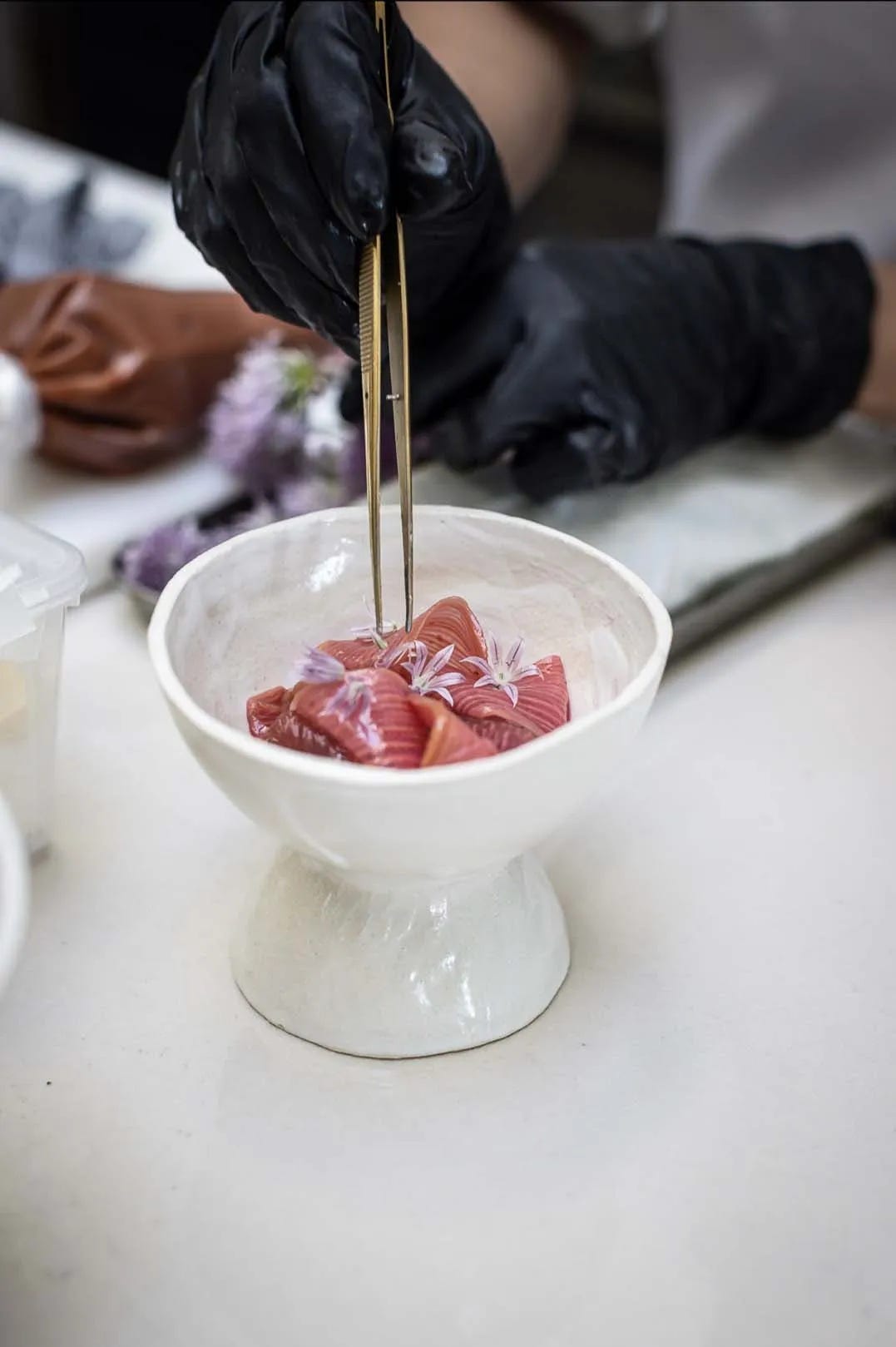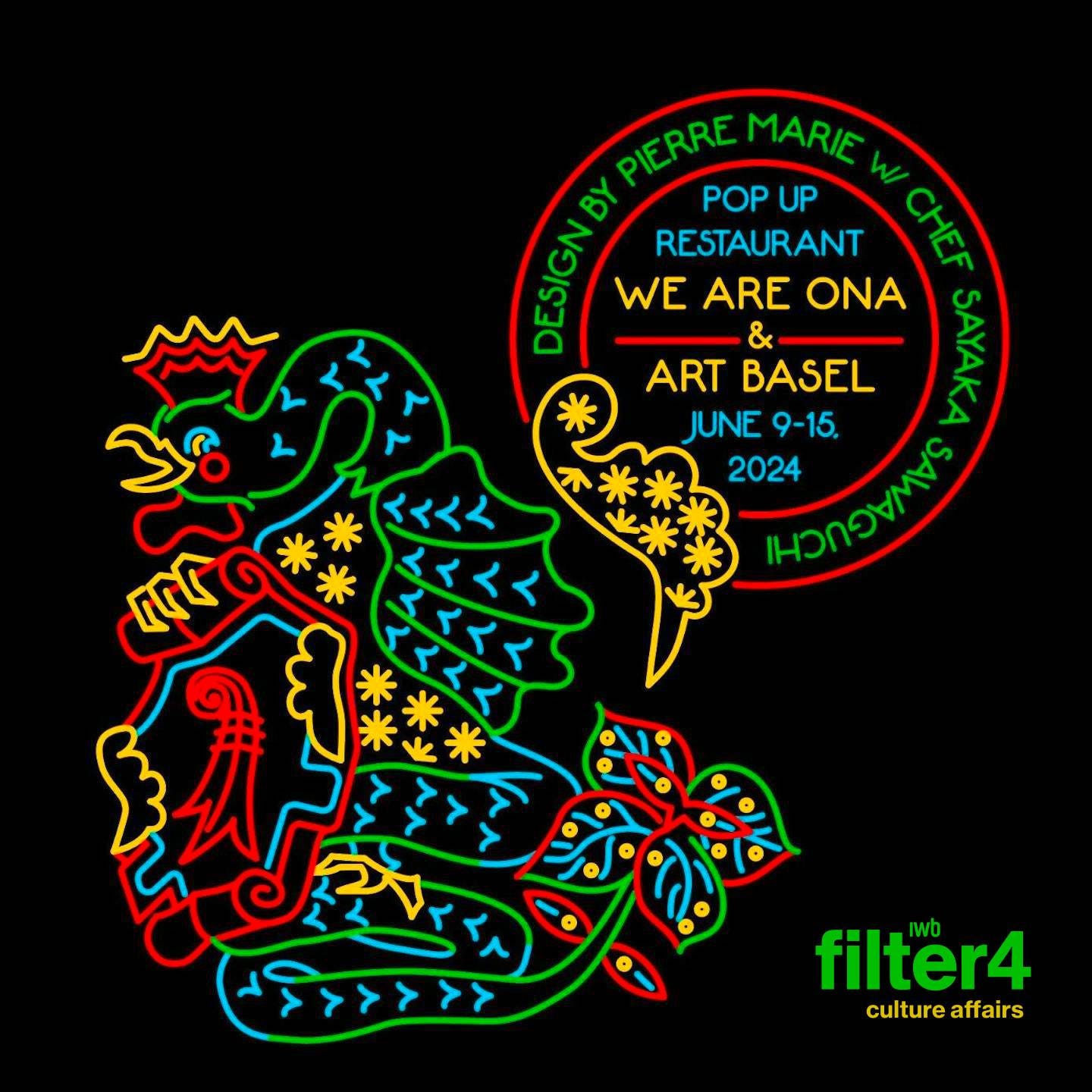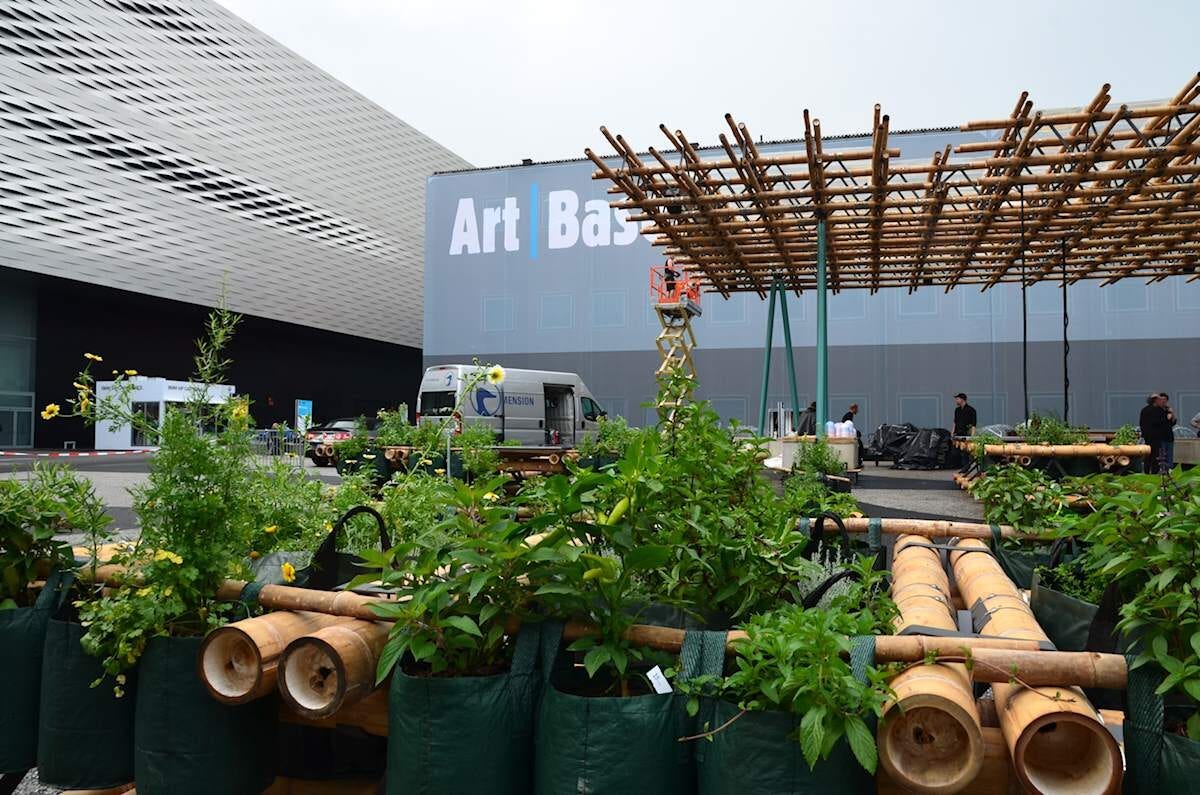Art is served: the rise of food and art fair collaborations
As the creative culinary studio WE ARE ONA kicks off new partnership with Art Basel, I decided to explore why art and food are such a popular pairing in art fairs...
There is over a week left for Art Basel (Basel, Switzerland). For those who are going or are genuinely interested in the growth of culinary and art collaborations, I wanted to highlight WE ARE ONA, the itinerant, creative culinary studio creating unique and ephemeral culinary experiences globally. The innovative pop-up restaurant and studio founded by Luca Pronzato in 2019 embarks on a groundbreaking year-long collaboration with the prestigious Art Basel. This unique partnership will commence in Basel from 9th June - 15th June 2024. The inaugural chapter of this extraordinary alliance will take place in Basel, Switzerland, featuring the exceptional talents of designer Pierre Marie and chef Sayaka Sawaguchi. Pierre Marie will craft the unique space design and inspiration in Filter4, a former municipal water tank in Basel.
Meanwhile, the culinary genius of Chef Sayaka Swaguchi, a Green Michelin star recipient born in Japan and residing in France, will be showcased through a special tasting menu designed for the occasion. But what makes this so different than other pop-ups or high-end luxury restaurants? What is the catch? The venue to host the pop-up experience is filter4 — a former slow filter system on the Bruderholz. Between the collaboration of taste, design, and conviviality, this experience differs from a museum canapé soiree or a dinner at “Bel Etage” or “Brasserie le Trois Rois.”

This is not the first time that Art Basel has presented a food installation or combined art and food as a part of its programme. I remember vividly coming across Thai artist Rirkrit Tiravanija's "Do We Dream Under the Same Sky" installation in the middle of Messeplatz.
The large-scale work was a platform to further develop the artists' ongoing 'the land' project through a mini-symposia hosted by Hans Ulrich Obrist on themes and issues relating to relational aesthetics1, social practice and collaboration. A herbal garden, kitchen, and communal area were activated for the duration of the art fair, and it created a place of hospitality where visitors could engage through the activities on offer. As a part of the Art Basel Unlimited 2017 presentation, Subodh Gupta presented "Cooking the World I," recreating an open hut made from used aluminum utensils, inside which he carries out a cooking and eating performance, commemorating these ritualistic practices. With this installation and food project, Gupta challenged the aesthetic traditions of the readymade to present novel ideas of referencing and anecdotal assumptions to viewers so that we could relate to our associations. Inside the backdrop of his monumental installation of used utensils, Gupta's cooking performance provides a modern-day paradigm of gastronomic art that transcends the traditional art fair stand.
As we reflect on the artistic practices of Gupta and Tiravanija, we see a powerful socio-economic critique and a bold exploration of social norms and community through art. However, it's interesting that food and art collaborations have evolved, shifting towards a more aesthetic or 'luxury' element. Can art and food still push the boundaries through socio-political discourse or a subtle message of current issues such as climate change, colonisation, and xenophobia? Or is it easy to focus on a delicious tasting menu in a historical space with a design that will make everyone enjoy the experience? With a 6-course lunch tasting menu and experience of 1,5 hours at 180 CHF and an 8-course dinner of 2,5 hours at 240 CHF prepared by Swaguchi focusing on freshness and seasonality, Marie has chosen one of Basel's emblems as a symbol to respond to the curated menu: the Basilisk. Will there be more collaborations like this? What is the future of food in the context of art fairs and the commercial art market? Will it help art sales or distract collectors? I can't wait to observe and see…
The French curator Nicolas Bourriaud published a book called Relational Aesthetics in 1998 in which he defined the term as:
A set of artistic practices which take as their theoretical and practical point of departure the whole of human relations and their social context, rather than an independent and private space
He saw artists as facilitators rather than makers and regarded art as information exchanged between the artist and the viewers. The artist, in this sense, gives audiences access to power and the means to change the world.





